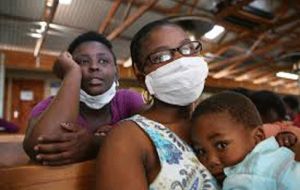MercoPress. South Atlantic News Agency
TB remains the leading infection killer in the world; global efforts to end the epidemic are falling far short
 Dr Margaret Chan, WHO Director General: “There must be a massive scale-up of efforts, or countries will continue to run behind this deadly epidemic and these ambitious goals will be missed”
Dr Margaret Chan, WHO Director General: “There must be a massive scale-up of efforts, or countries will continue to run behind this deadly epidemic and these ambitious goals will be missed”  Of the estimated 10.4 million new TB cases, only 6.1 million were detected and officially notified in 2015, leaving a gap of 4.3 million.
Of the estimated 10.4 million new TB cases, only 6.1 million were detected and officially notified in 2015, leaving a gap of 4.3 million. New data published by the World Health Organization (WHO) in its 2016 Global Tuberculosis (TB) Report show that countries need to move much faster to prevent, detect and treat the disease if they are to meet global targets. Governments have agreed on targets to end the TB epidemic both at the World Health Assembly and at the United Nations General Assembly within the context of the Sustainable Development Goals.
They include a 90% reduction in TB deaths and an 80% reduction in TB cases by 2030 compared with 2015.
“We face an uphill battle to reach the global targets for tuberculosis,” said Dr Margaret Chan, WHO Director General. “There must be a massive scale-up of efforts, or countries will continue to run behind this deadly epidemic and these ambitious goals will be missed.”
The WHO 2016 Global TB report highlights the considerable inequalities among countries in enabling people with TB to access existing cost-effective diagnosis and treatment interventions that can accelerate the rate of decline in TB worldwide. The report also signals the need for bold political commitment and increased funding.
While efforts to respond to TB saved more than 3 million lives in 2015, the report shows that the TB burden is actually higher than previously estimated, reflecting new surveillance and survey data from India.
In 2015, there were an estimated 10.4 million new TB cases worldwide. Six countries accounted for 60% of the total burden, with India bearing the brunt, followed by Indonesia, China, Nigeria, Pakistan and South Africa.
An estimated 1.8 million people died from TB in 2015, of whom 0.4 million were co-infected with HIV.
Although global TB deaths fell by 22% between 2000 and 2015, the disease was one of the top 10 causes of death worldwide in 2015, responsible for more deaths than HIV and malaria.
Gaps in testing for TB and reporting new cases remain major challenges. Of the estimated 10.4 million new cases, only 6.1 million were detected and officially notified in 2015, leaving a gap of 4.3 million. This gap is due to underreporting of TB cases especially in countries with large unregulated private sectors, and under-diagnosis in countries with major barriers to accessing care.
In addition, the rate of reduction in TB cases remained static at 1.5% from 2014 to 2015. This needs to accelerate to 4-5% by 2020 to reach the first milestones of the World Health Assembly-approved End TB Strategy.
Multidrug-resistant TB (MDR-TB) remains a public health crisis. WHO estimates that 480 000 people fell ill with MDR-TB in 2015. Three countries carry the major burden of MDR-TB – India, China, and the Russian Federation – which together account for nearly half of all cases globally.
Detection and treatment gaps continue to plague the MDR-TB response. In 2015, only one in five of the people newly eligible for second-line treatment were able to access it. Cure rates continue to remain low globally at 52%.
“The dismal progress in the TB response is a tragedy for the millions of people suffering from this disease. To save more lives now, we must get newly recommended rapid tests, drugs and regimens to those who need them. Current actions and investments fall far short of what is needed,” said Dr Mario Raviglione, Director of the WHO Global TB Programme. “The world is finally waking up to the threat of antimicrobial resistance -- now is the time to accelerate the MDR-TB response.”
In 2015, 22% of HIV-positive TB patients were not enrolled on antiretroviral therapy (ART). According to WHO recommendations, ART needs to be made available for all HIV-positive TB patients. Nearly a million children under five, and people living with HIV, who are especially vulnerable to TB and who were eligible for preventive treatment, were able to access it in 2015. This needs to be rapidly expanded.
For TB care and prevention, investments in low and middle-income countries fall almost US$ 2 billion short of the US$ 8.3 billion needed in 2016. This gap will widen to US$ 6 billion by 2020 if current levels of funding are not increased.
Overall, around 84% of the financing available in low and middle-income countries in 2016 was from domestic sources, but this was mostly accounted for by the BRICS (Brazil, the Russian Federation, India, China and South Africa) group of countries. Other low- and middle- income countries continue to rely heavily on international donor financing, with more than 75% coming from The Global Fund to Fight AIDS, TB and Malaria.
In addition, WHO estimates that at least an extra US$ 1 billion per year is needed to accelerate the development of new vaccines, diagnostics, and medicines.




Top Comments
Disclaimer & comment rules-

Read all commentsThe dismal progress in the TB response is a tragedy for the millions of people
Oct 18th, 2016 - 02:02 pm 0Agreed,
the world must find a way to inoculate all of them as quickly as pos,
Commenting for this story is now closed.
If you have a Facebook account, become a fan and comment on our Facebook Page!